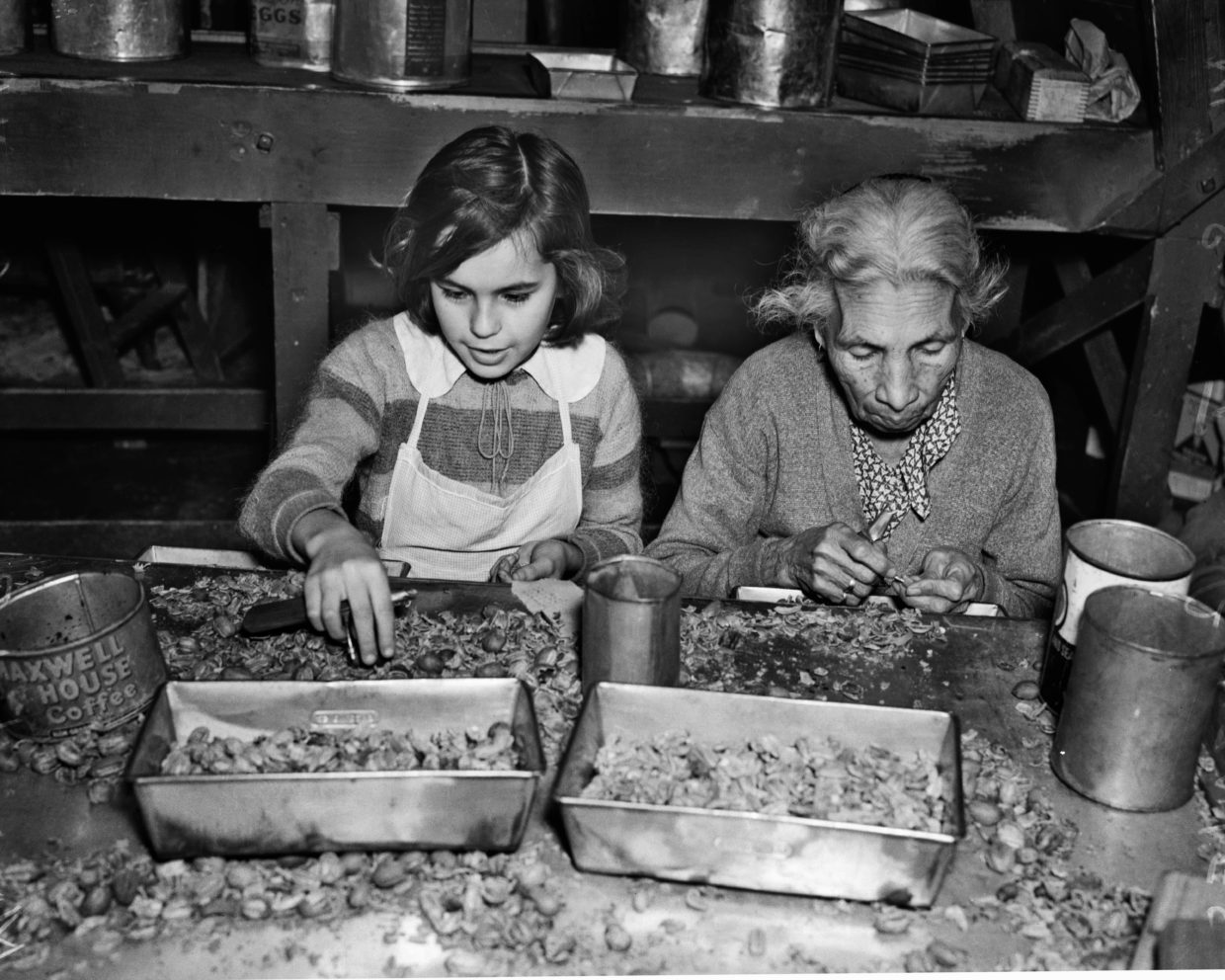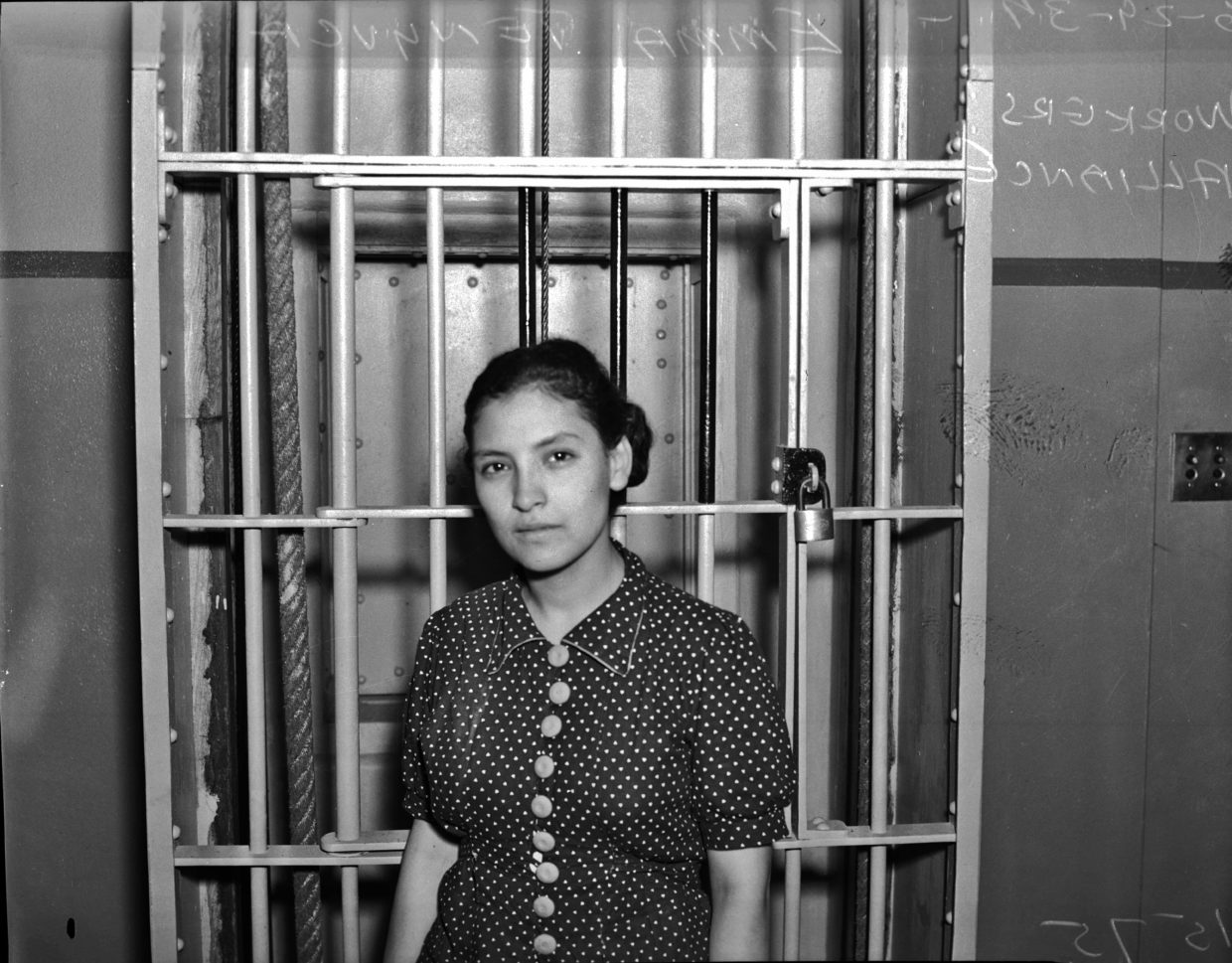“San Antonio is—as it has always been—a place of romance, a city where mañana (tomorrow) and quien sabe (who knows) ever have been and still are words of significance.”
This observation is from a guidebook to San Antonio published in 1938 as part of the New Deal’s Federal Writers’ Project. This Depression-era publication, like almost all the other guidebooks written since, presents readers with a salute to the city’s Old World charm, its markets and fiestas and tortilla vendors and picturesquely crumbling missions. It wasn’t a fantasy—the Spanish colonial landmarks and Mexican rhythms were real—but there was another San Antonio, one of far grittier authenticity, that remained out of the line of the typical tourist’s sight, particularly in that celebratory centennial year.
San Antonio’s West Side was where most of the city’s 100,000 Spanish-speaking residents lived. Many were native-born Tejanos, others were immigrants from Mexico who had fled to Texas during the revolutionary years. It was a zone of real poverty, one of the worst slums in the country, where almost nobody had indoor plumbing and three-fourths of the population in an age of electricity still lit their houses with kerosene lamps.
As many as 20,000 of the people who lived on the West Side—men, women, and children—found seasonal work as pecan shellers, either in the plants operated by a big local firm called the Southern Pecan Shelling Company, or just by operating out of their own homes as contractors. At the plants, they sat at long tables and cracked the nuts or dug out the meat with picking knives.
The conditions were grim. There were no bathrooms, no windows. On hot days the doors at the end of the room might be open, but otherwise the pecan dust that hung in the air had nowhere to go except to settle into the lungs of the shellers. “At the end of the day there was a brown haze in the sheds,” one of the workers remembered, “and I think that is why several family members contracted tuberculosis.”
The business of pecan shelling had been mechanized a few decades before, but the Depression brought cheap labor, and it was more cost-efficient for the pecan companies just to hire people to do the work by hand than to buy and maintain the machines. The workers’ pay came in envelopes from a local bank that cheerily advised them, “Let a Bank Account shelter you on that Rainy Day! The Acorn from which wealth grows is—Saving!”
 Like these San Antonio pecan shellers, generations of Mexican Americans in Texas were trapped in unhealthy labor that paid poverty wages. (Credit: University of Texas at San Antonio)
Like these San Antonio pecan shellers, generations of Mexican Americans in Texas were trapped in unhealthy labor that paid poverty wages. (Credit: University of Texas at San Antonio)
But to a pecan sheller, a savings account was as distant a prospect as a Park Avenue penthouse. Pay was tied to the amount of pecan meat produced, seven cents for a pound of intact halves and six cents for pieces. The typical weekly income for a sheller in 1938 was $2.73. The median yearly income for a family of five was less than $300. To the company’s owners, the low wages were easily justified by what they imagined to be the workers’ inborn low expectations.
“The Mexicans don’t want much money,” one of the owners concluded. “Compared to those shanties they live in, the pecan shelleries are fine. They are glad to have a warm place to sit in the winter. They can be warm while they’re shelling pecans, they can talk to their friends while they’re working . . . If they get hungry they can eat pecans.”
But after the pay for a rendered pound of pecans was reduced by a penny at the beginning of 1938, somewhere between 6,000 and 8,000 shellers went on strike. It was an impromptu strike at first, but it soon acquired an experienced, disciplined leader named Emma Tenayuca. She was only 20 years old, weighed 108 pounds, and was five feet, one and a half inches tall.
“It was right she would be called La Pasionara,” another Texas labor leader of that time, Latane Lambert, remembered many years later, “because in her shrill little voice she would make your spine tingle.”
La Pasionara roughly translates as “the Passionate One,” a fitting name for a girl who went to her first political rally at the age of six, learning the words to “The Internationale” (“Arise ye workers from your slumbers / Arise ye prisoners of want”), and quickly moved on to the writings of Karl Marx and of the Flores Magón brothers.
In an oral-history interview given to the Texas Observer in 1983, when she was in her sixties, Tenayuca floated the suggestion that her unusual last name tied her father’s lineage far back in time to the Aztec empire. Her Mother’s family traced itself back to the mission Indians who had been part of the Spanish retrenchment at San Antonio after the East Texas missions were abandoned near the end of the 18th century. “I am satisfied,” she said, “that we have been here quite a long time.”
In her first years of high school, she joined the women’s auxiliary of the League of United Latin American Citizens. LULAC, organized in Corpus Christi in 1929, included among its aspirational members José de la Luz Sáenz, who brought the perspective of World War I veterans to the fight for Mexican American civil rights. But LULAC proper was a men’s outfit, and though the middle-class businessmen and lawyers who founded it were sincere and energetic when it came to tackling racial discrimination, they must have seemed stuffy to the impatient young radical in their auxiliary ranks.
She was 16 the first time she went to jail, after joining the picket line of a group of women who were striking against a San Antonio cigar factory. After high school, she got a job as a hotel elevator operator and washed jars at a pickle factory, but her real work was organizing. “She would go house to house,” a fellow activist remembered of her efforts to enlist members into an organization called the Workers Alliance, “up one street and down another, listening to them, asking them to join the union. . . . She organized pickets and told people they had rights.”
As the leader of the pecan strike, Emma Tenayuca was promptly arrested. She had already been pegged as a communist agent by San Antonio’s police chief. “The Tenayuca woman,” he said after one of her previous arrests, “is a paid agitator sent here to stir up trouble among the ignorant Mexican workers.”
If she was an agitator, she was an unpaid one, and the Mexican workers she was stirring up were far from ignorant about the conditions of their own lives. But there was also the fact that she was a communist. She had joined the party the year before and married Homer Brooks, the secretary of the Texas Communist Party. It was an incendiary affiliation that led to what should have been natural allies in the struggle, like LULAC, keeping their distance from La Pasionara.
 Emma Tenayuca behind bars—not for the first time. She was first arrested when she was sixteen, but by the time she led the pecan shellers strike she had become a real threat to business as usual in San Antonio. (Credit: University of Texas at San Antonio)
Emma Tenayuca behind bars—not for the first time. She was first arrested when she was sixteen, but by the time she led the pecan shellers strike she had become a real threat to business as usual in San Antonio. (Credit: University of Texas at San Antonio)
And the threat of godless communism guaranteed the hostility of the Catholic Church. “In the midst of this community,” a Catholic newspaper warned, “exists a woman by the name of Emma Tenayuca who wants to spread disorder and hatred . . . Don’t give your names to her when she comes around to solicit them. Warn people when she comes around. Mrs. Tenayuca de Brooks is not a Mexican, she is a Rusofile, sold out to Russia.”
The taint of communism also caused problems with the Congress of Industrial Organizations, the federation of industrial worker unions that moved in to take over management of the strike. Tenayuca signed the papers they presented her, removing herself as the pecan shellers’ strike leader, but she acted as if she had never capitulated. She went right back to giving speeches out on the streets, writing circulars, and assigning strikers to their positions on the picket lines.
She instructed them not to provoke the police by making eye contact with them, but there was plenty of havoc anyway. The police beat the strikers with axe handles, repeatedly teargassed them, hauled them into jail on flimsy charges. None of that stopped Tenayuca from holding rallies in the streets, speaking to 5,000 pecan workers at a time.
The strike ended a few months after it started, in the wake of an arbitrated agreement guaranteeing workers the minimum wage of 25 cents an hour set forth by the newly passed Fair Labor Standards Act. But it was only a faint victory, because the owners of the pecan-shelling companies simply went back to using shelling machines rather than pay workers the increased rate.
Emma Tenayuca ran quixotically for Congress the next year on the Texas Communist Party ticket, and even persuaded San Antonio’s just-elected mayor, Maury Maverick, to allow the use of the city auditorium for the party’s state convention. Maury Maverick was as close as you could get to Anglo royalty in San Antonio. His grandfather was Sam Maverick, who had guided Texian forces when they attacked the town in 1836 and who later became the Gulf Coast cattle baron who gave his name to wild, unbranded calves.
His grandson Maury was well aware of how the family name had entered the language as an against-the-grain accolade by the time he wrote his autobiography, A Maverick American. “The stork brought me into the world,” he declared with hearty Texas chauvinism in its opening chapters. “I remember it exactly. I can recall the first thing I saw in my flight was the Alamo when I sat bolt upright in the diaper which was in the stork’s bill. Even though the stork had to hold his mouth tightly shut, he was telling me about the heroes of the Alamo.”
But even with his illustrious pedigree, Maverick wasn’t bulletproof, not in the poisonous political climate of Texas in the 1930s. The convention he allowed to be held in the auditorium was overrun by a mob of 5,000 that forced its way past the police cordons and did its best to dismantle the building and terrorize the convention’s communist delegates.
…
 Tenayuca was forced to resign from the leadership of the strike by the Catholic Church and by the union that represented the pecan shellers—both were wary of her Communist connections—but she paid no heed to her expulsion. She was out on the street the next day organizing workers. (Credit: University of Texas at San Antonio)
Tenayuca was forced to resign from the leadership of the strike by the Catholic Church and by the union that represented the pecan shellers—both were wary of her Communist connections—but she paid no heed to her expulsion. She was out on the street the next day organizing workers. (Credit: University of Texas at San Antonio)
Emma Tenayuca barely escaped, hustled out through a back door under a nervous police guard. Maury Maverick was hanged in effigy but stood firm, announcing, “The civil liberties of everybody in San Antonio, even Emma Tenayuca, will be upheld.”
Maverick was defeated in the next election. Tenayuca divorced her husband and fell out of love with communism as well after learning of Stalin’s terror regime. She moved to San Francisco, got a college degree, and came back to San Antonio 15 years later to teach elementary school. For the rest of her life, she was more or less a private citizen—no longer the public firebrand immortalized in a photograph taken at a Workers Alliance demonstration in front of San Antonio’s city hall the year before the pecan shellers’ strike, with her arm raised and her hand clenched into a fist, the embodiment of defiance and youthful confidence.
You can get a sense of what she must have been like by watching a video interview that was made about ten years before her death, in 1999. She is wearing a gray sweater almost the exact shade of her short wavy hair, and she is testy and exasperated with the interviewer. She quizzes him about whether he is a Christian or whether he has read Voltaire. She gives him the names of books he needs to check out of the library at once, and condescendingly tells him that they are “very very simple.” When asked what her goal was in helping the workers during the pecan shellers’ strike, she almost jumps out of her chair in exasperation: “Food!”
The interviewer keeps angling for a moment of self-reflection, but it isn’t forthcoming. When he tells her that the people of San Antonio now regard her as a heroine, her patience is once again severely tested. “Look,” she demands, “do you know how busy I was kept? You think I had time to pick up a paper and cut it out because my picture was in it?”
__________________________________

Excerpted from Big Wonderful Thing: A History of Texas by Stephen Harrigan, © 2019. Reproduced with permission from the University of Texas Press.
Previous Article
Min Jin Lee: On Speakingand Power
Next Article
Sigrid Undset's Doomed Flâneuse isa Cautionary Tale



